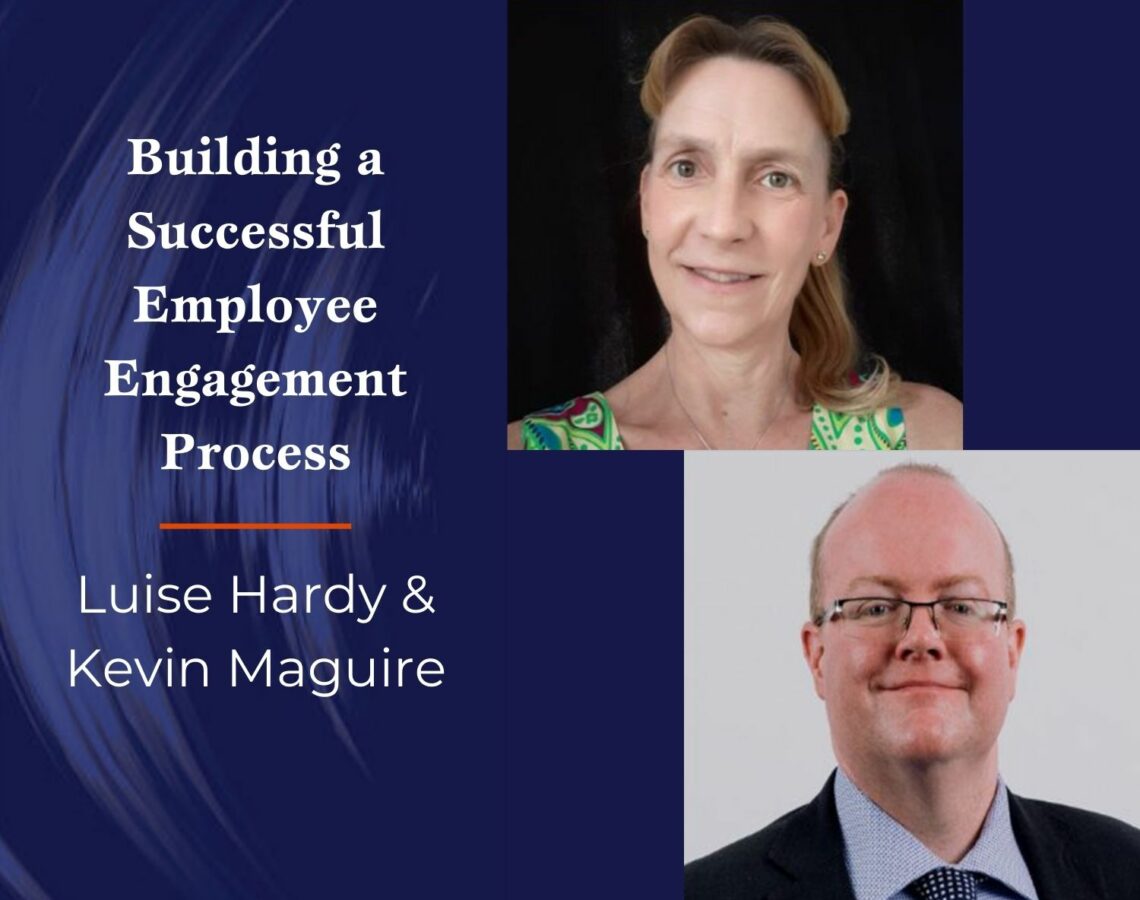Building a Successful Employee Engagement Process

The landscape of employee relations is changing, particularly in office environments with flexible working.
The landscape of employee relations is changing, particularly in office environments with flexible working. There are many different opinions about how organisations should approach their policies while representing their employees’ diversity. The subject of employee engagement sounds simple, but is it?
In this podcast, Dr Sabine Dembkowski, Managing Partner of Better Boards, discusses board futureproofing with Louise Hardy and Kevin Maguire. Louise is Non-Executive Director at FTSE 250 company Crest Nicholson, where Kevin Maguire is General Counsel & Company Secretary.
Some of the key takeaways of the conversation include:
“There really is nothing like sitting in a room with people”
Louise opens by saying that boards get a lot of data-driven, paper-based information about how employees are feeling and thinking, from surveys, for example. But nothing beats having these conversations face-to-face to tease out the issues, bouncing thoughts and ideas off one other. She believes it gives a richness of direct feedback for employees to engage with an independent Director who brings learning and insights into the boardroom.
Kevin points out that employees are key stakeholders in a board’s deliberations, and there is more than one method of employee engagement that satisfies the corporate governance code. They have both found that a designated non-executive director approach with employee meetings is the best for board effectiveness.
“Don’t manipulate who attends”
Louise relates that at Crest, they have established visits to all regions, business units, and head office, aiming to engage with a diverse range of individuals. Given that the organisation is both site- and office-based, it’s crucial to include representatives from different departments, workgroups, and stages of their careers – from newcomers to those with 20 years of service, to enrich discussions. They do not dictate who attends these sessions and often rely on volunteers.
Board attendance at these sessions consists of Louse as the designated workforce engagement representative and the Group HR Director. This is beneficial because many of the concerns raised may already be addressed through ongoing process and procedure enhancements, and having the HR Director present allows for immediate responses. Engagement is key during these sessions, so to avoid distractions like notetaking, a third party is present to note key points and relevant issues that arise.
“The more you can get people to open up, the more others will open up”
Louise outlines the “house rules,” which are seldom altered. She initiates each meeting by emphasizing the freedom to express oneself (Chatham House rules, where no statement is linked to a specific person). She explains they are conducting a comprehensive review of the organisation to identify common concerns. These collective issues will be presented to the executive team and the board.
A significant part of the process is the atmosphere in the room, and she aims to foster an environment that naturally helps people gradually become more comfortable as the meeting proceeds. It is a gentle, open, and discursive approach, probing into people’s feelings. Louise also notes that, at times, someone from one region voices a concern or praises something, and another person from a completely different department/region resonates with it. This triggers a flowing and expanding dialogue. Over time, people have realised there will be no negative consequences of speaking up in sessions, and people feel it is a safe space where issues raised will be addressed within the organisation.
Kevin notes that the effectiveness of engagement sessions largely depends on how they are initially set up. After conducting these sessions for several years, there’s a certain momentum and rhythm, and people clearly understand what to expect. Even those who don’t attend know what transpires during these sessions, creating a certain reputation around them.
He suggests beginning simply for those just starting to look at employee engagement, especially if there are resource or time constraints. While it might be ideal to have a representative from every business unit or to hold different meetings for complex groups, starting small is no harm. You can start with just one representative from each business unit or a sample of employees, hold a first meeting, see how it progresses, and gradually build on this, making adjustments as you proceed. This approach also helps build employee confidence about what they can expect, rather than presenting something so big and significant at the outset that no one is quite sure how to approach it. The advice is to start small and keep it simple.
“Treat the employee engagement subject like a board Committee”
Kevin explains how the role of the company secretary can differ from one organisation to another. Still, as Company Secretary at Crest, he is crucial in ensuring corporate governance and code compliance and that the chosen engagement method meets these obligations.
Company Secretaries can also provide additional input and guidance as needed, as their role extends to sequencing the outcomes of these meetings into boardroom discussions and the boardroom agenda. Crest finds it effective to treat the topic of employee engagement like a board Committee during board meetings – so as Committee Chairs provide updates at most meetings, Louise provides updates on recent employee engagement progress and outputs as if it were a separate Committee. During board meetings, he and Louise often refer back to specific feedback items that may be relevant to the ongoing discussion. This is a reminder to keep an eye on employee feedback and how it can contribute to board debates, much like many other topics discussed around the board table, as they assist the Chair in managing the agenda and debate.
“Information is just information. You do need to do something with it”
Louise explains how she and the HR director have established a reporting structure. They conduct 3-4 meetings annually, covering all regions twice, for 8-9 meetings. During these, they identify the main topics; typically, some issues will be more prominent and widespread, affecting the entire company. After the sessions, they both review all the issues and identify the top 5 or 6, which are usually the most significant and impactful. These key issues and recommended actions are presented at the board meeting, usually after discussion with the CEO beforehand, and often with agreed-upon actions. Below these, they list the smaller, more localised issues, which are not ignored but are expected to be addressed by the senior management team.
Kevin notes that the executive team may not always concur with every point raised during the employee engagement sessions, and it is not the board’s role to address each comment. However, trends can be identified by maintaining records and monitoring issues over time. A single comment may not gain traction initially, but if similar sentiments surface repeatedly over a few months, either from the same or different divisions, it prompts re-evaluation, as a recurring theme could indicate a deeper issue that needs to be addressed.
Louise explains that they do not record the sessions but rely on notetaking. As the independent Non-Executive Director, she aims to be fully engaged in the meeting, making minimal notes to ensure everyone feels heard and not singled out. After the meeting, she immediately identifies the main points, and Kevin explains that these are condensed into a 1- or 2-page summary for the subsequent board meeting. This concise format is easy to digest and allows focus on the key points from the recent session – plus, it aligns with the updates provided by other Committees.
The three top takeaways from our conversation are:
- Do not put off getting started because it is so beneficial and really worth the time and effort.
- It becomes easier if you start small and then build up from there, so you will quickly find a rhythm that will work for your organisation.
- It’s not that difficult talking about the tough subjects – they come up in the natural course of the discussion, so it is pretty easy to get those aired.
Don’t forget to subscribe never to miss an episode of the Better Boards Podcast Series. Available on Apple, Spotify or Google.
To find out how you can participate in the Better Boards Podcast Series or more information on Better Boards’ solutions, please email us at info@better-boards.com.



